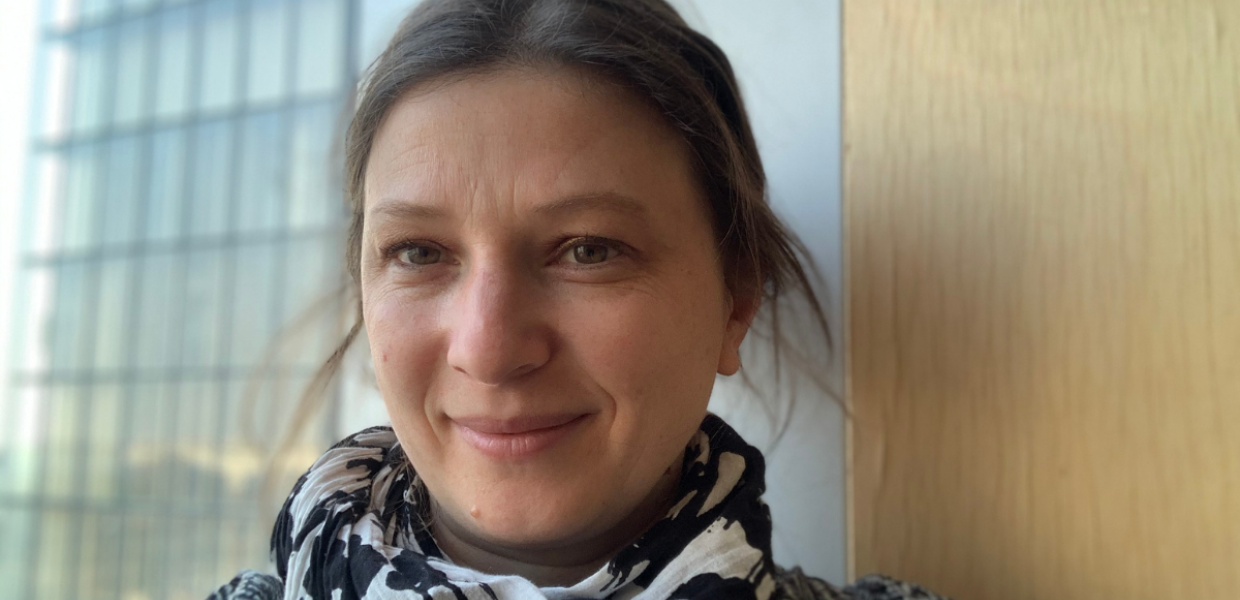Tell us about your current role.
I’ve been deputy director for Services and Networks at the National Library of France (BnF) since 2014. This is a management position within the library: our team is composed of about 600 people working in all library-related technical areas, from IT to preservation (physical and digital) and more.
What was your career path to your current role?
I was a student at the Ecole nationale des chartes, a university specialising in the study of cultural heritage which prepares students for careers in libraries, archives and museums. I used to specialise in 17th century prints! But I turned towards digital activities very soon in my career. In 2003, I started working in the Digital Library Department at the BnF, focusing on topics such as metadata management, user oriented design, digital preservation and semantic web. All of these topics had a great potential for international discussions, and very soon I became involved in international networks like IFLA, Europeana and the W3C. Then for three years (2011-2014) I left the BnF to work in a museum, the Centre Pompidou in Paris, where I was in charge of a great digital transformation programme. I came back to the BnF in my current position in 2014.
What are you working on right now?
I’ve spent the last five years working on establishing a new service for researchers in digital humanities, called the BnF Data Lab. In 2020, the BnF director general asked me to lead a task force on artificial intelligence to establish a roadmap for the next five years for our library. We framed a three year programme that will be co-engineered with several partners in the academic, cultural heritage and commercial fields. This will touch many - if not all - aspects of the library’s activities. The first areas where we will develop AI projects include image mining in Gallica, our digital library, and handwriting text recognition (HTR). But we will also conduct experiments in other domains such as predictive data for conservation policies, georeferencing ancient maps of Paris. Many of these projects come to life in our new Data Lab, opening this autumn.
Additionally, as a manager, I’m involved in lots of projects, including the development of a new cataloguing system called Noemi, and a programme we are running to ingest digital legal deposit (especially audio and video). But I’m also one of the main contacts for international matters related to technology. Three important consortiums have my attention recently: the International Internet Preservation Consortium which focuses on web preservation, the International Image Interoperability Framework, and the AI4LAM community focused on artificial intelligence for archives, libraries and museums.
What do you think is the biggest opportunity AI presents for the cultural heritage sector?
AI is already a reality in our day-to-day lives: we have conversations with our smartphones, listen to algorithms-designed playlists, drive cars that warn us when we go off the road - so it’s really just a matter of time before it starts being a professional reality for the cultural heritage sector.
The promises held by this technology are numerous: as we’ve spent the past 20 years building massive digital collections, AI may be at some point the only way to make them understandable and findable for our users. I think of collections like digitised ancient newspapers, web archives, some collections of ancient photographs that we haven’t yet catalogued or the tens of thousands of music albums that go live every year. The predictive features of AI could help us provide our users with personalised recommendations, but also be instrumental in management operations such as conservation policies, cataloguing or analysis of the collections.
What is the biggest challenge?
Right now, I’d say the main question is: how to make the dream come true? The technology is mature enough, we have data, tools and use cases, and we’ve been able to demonstrate the efficiency of AI in the framework of research projects. But we are still far from integrating AI in production in our information systems. First, we need appropriate skills within our teams, and with a fast-evolving technology such as AI, this is not easy to achieve. Second, our legacy systems don’t talk easily with the new AI architecture: a strong data governance is required in order to make AI possible, and we may have to rethink the very core of our applications. Finally, moving towards AI is a costly effort, but I’m convinced that it will be worth the investment.
A study from 2018 suggests that just 12% of machine learning researchers are women. What do you think can be done to encourage more women into the field?
I want to believe that the times when women felt excluded by the study of sciences or techniques are already behind us; hopefully mentalities are changing. A woman who wants to be a software developer, for instance, won’t be systematically discouraged by the schools and companies being only filled with men. But I’d also say that AI is about much more than just tech: there is a place for people like myself who are neither engineers or scientists, but rather focused on the impact of this technology in various areas of life and culture. If we want to build successful AI projects, we need to involve people who are experts in content of heritage collections, data models, UX design, data visualisation and other areas of knowledge that rely heavily on social sciences and humanities. Many ethical issues have also arisen in relationship with AI: biases in datasets, acceptability of change, ecological impact. If we’re going to build the world of tomorrow using AI, we need a human approach to its development, we need to design it for and with the people as a whole, and not only the male-half of humanity.



